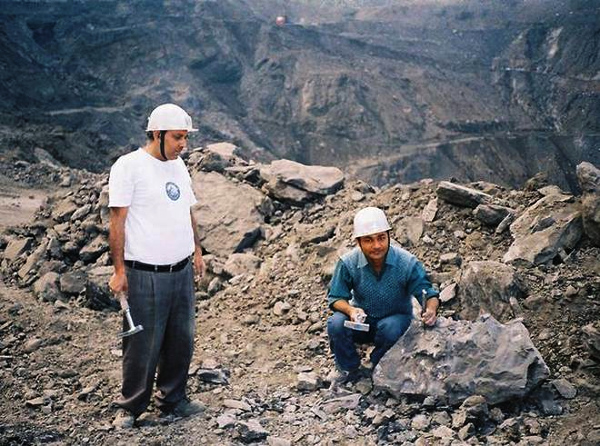Two fossils dating back 25 million years were found in Makum coalfield in Assam
With over 49,000 plant species reported as of 2018, India holds about 11.5% of all flora in the world. Now, a new fossil record has shown that India is the birthplace of Asian bamboo, and they were formed about 25 million years ago in the north-eastern part of the country.
Ancient fossils
An international team of researchers found two fossil compressions or impressions of bamboo culms (stems) and after further study noted them to be new species. They were named Bambusiculmus tirapensis and B. makumensis – as they were found in the Tirap mine of Makum Coalfield in Assam. These belonged to the late Oligocene period of about 25 million years ago.
They also found two impressions of bamboo leaves belonging to new species Bambusium deomarense, and B. arunachalense, named after the Doimara region of Arunachal Pradesh where it was discovered. These leaves were found in the late Miocene to Pliocene sediments, indicating that they were between 11 and three million years old.
Yunnan Province in China now has the highest diversity of bamboo, but the oldest fossil in that region is less than 20 million years old, clearly indicating that Asian bamboo was born in India and then migrated there. This finding further strengthens the theory that bamboo came to Asia from India and not from Europe.
Wide niche
“Today, we can see bamboo in a wide range of climatic conditions from as cold as 5 degree C to even 30 degrees C. And at sea level to heights of about 4,000 metres. They can survive in varying rainfall conditions too. We wanted to know what made it develop such a wide environmental niche,” explains Gaurav Srivastava, from the Birbal Sahni Institute of Palaeosciences, Lucknow. He is the first and corresponding author of the paper published recently in the journal Review of Palaeobotany and Palynology.
Role of plate tectonics
In fact, the European bamboo fossil is about 50 million years old. Dr Srivastava explains that the Indian plate collided with the Eurasian plate about 50 million years ago. However, the suturing between the two plates were not completed until 23 million years, meaning the plates were not completely joined, restricting migration of plants and animals. And also as the Himalayas were not formed yet, the temperature was also warm and humid in the Northeastern region, with not many seasonal variations.
The present climate in the region is cold with strong winter and summer conditions. Bamboo braved these climatic and geographical changes making it the fittest in the survival race.
“Bamboo fossils are not very common in India as they are known only from the Siwalik sediments. We have planned more studies in this region and search for its fossils in older rocks too,” adds Rakesh Chandra Mehrotra, the study head from the Birbal Sahni Institute of Palaeosciences.
Dr. Mehrotra adds that paleobotany is studied only in very few pockets in India. This study has shown that India is a treasure trove of plant fossils and more importance needs to be given to its study.
Source: The Hindu
Image Courtesy: The Hindu
You may also like
-
New Heat-Based Approach To Cancer Treatment Can Reduce Chemotherapy Doses
-
Scientists Take A Major Step Towards Unification Of Classical & Quantum Gravity
-
India Graphene Engineering and Innovation Centre (IGEIC) Under the Vision of Viksit Bharat@2047 Launched
-
New High-Performance Gas Sensor can Monitor Low Level Nitrogen Oxides Pollution
-
Antidepressant Drug can be Repurposed for Treating Breast Cancer
